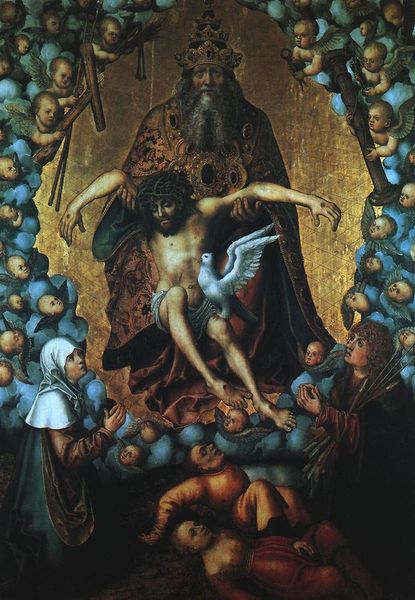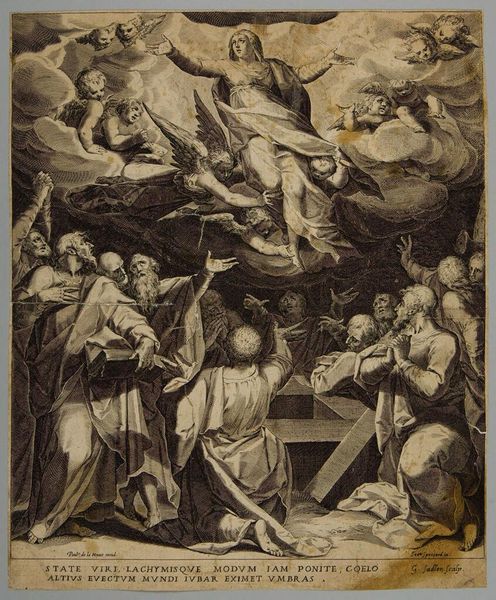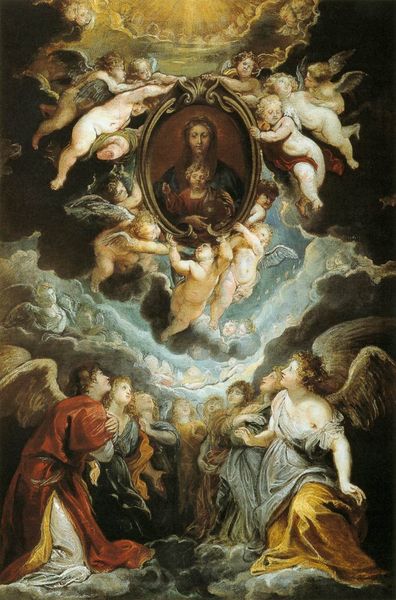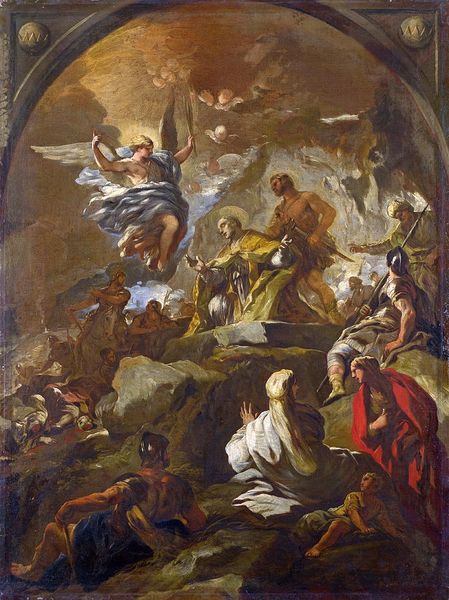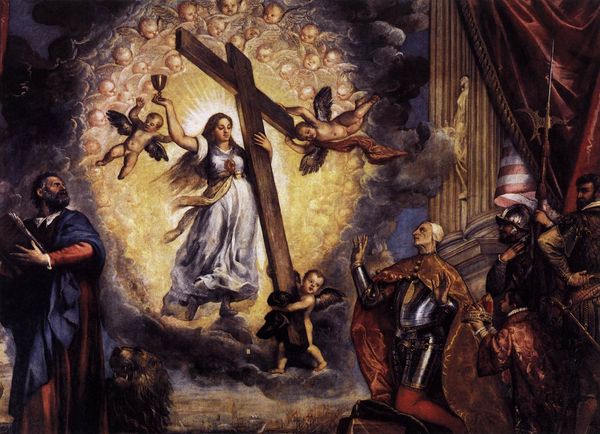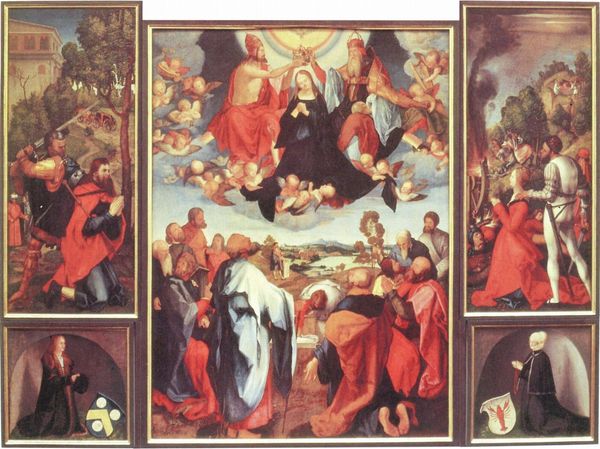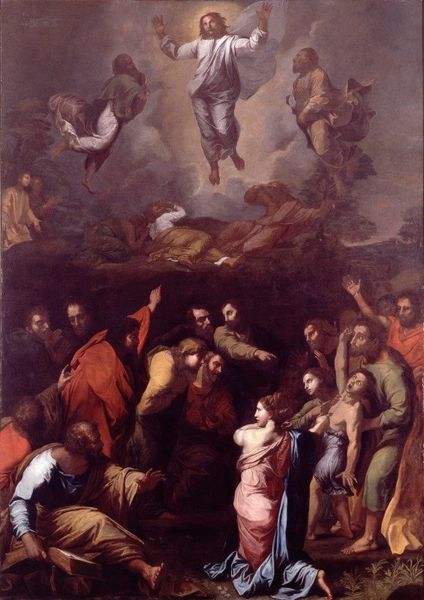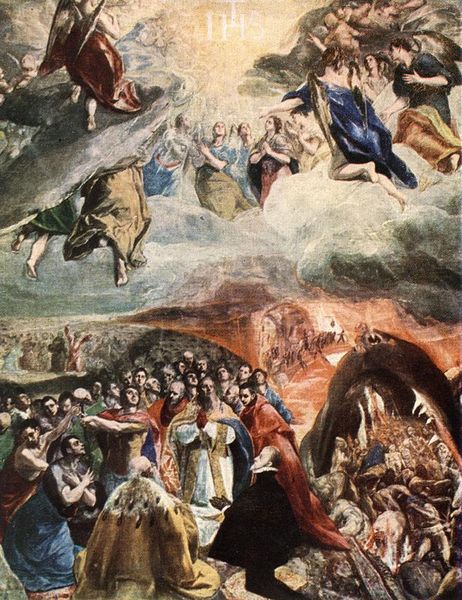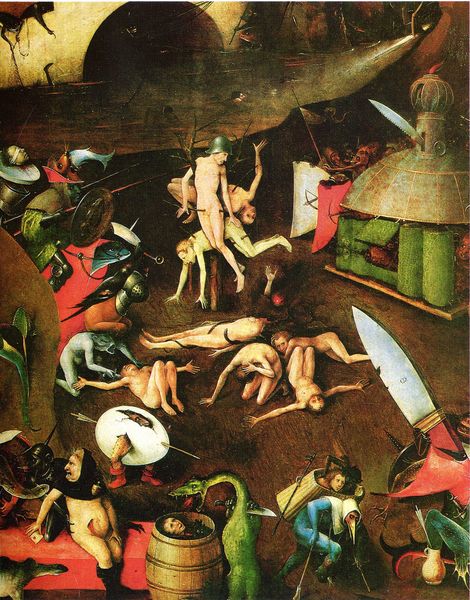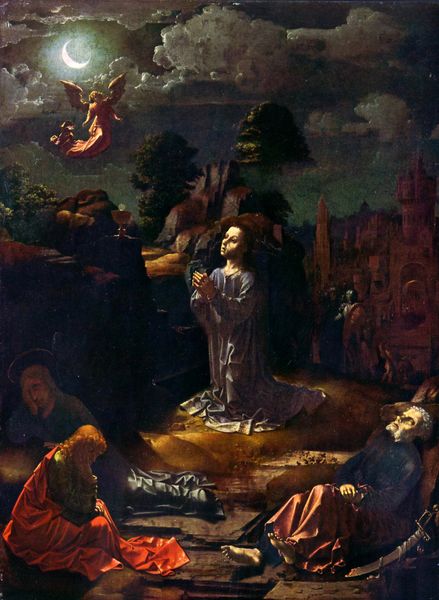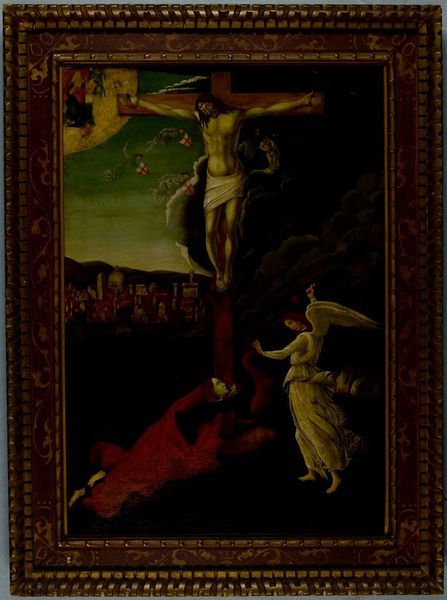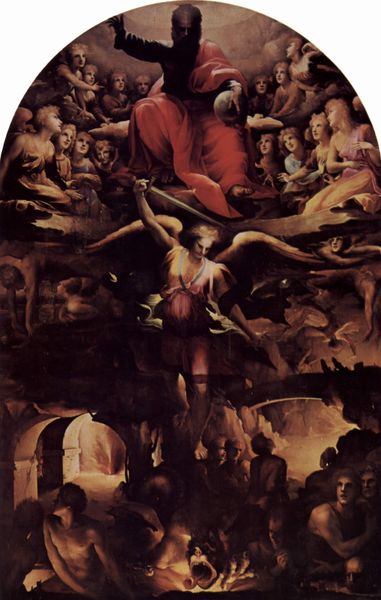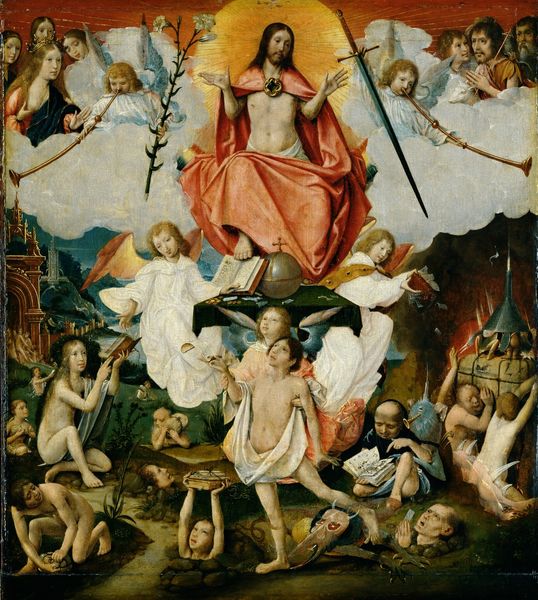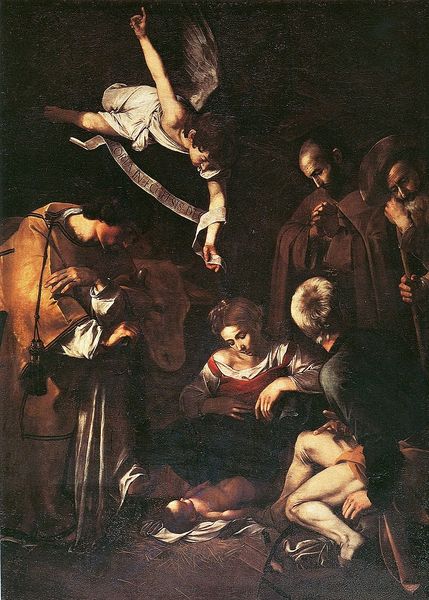
Dimensions: support: 570 x 514 mm
Copyright: CC-BY-NC-ND 4.0 DEED, Photo: Tate
Editor: This is "An Allegory of Man" by an unknown British artist from the 16th century, currently housed at Tate Britain. It’s quite overwhelming at first glance, packed with figures and text. What symbolic elements stand out to you in this piece? Curator: The visual density itself speaks volumes. Note how Christ in the upper register is flanked by cherubs and how the man below is beset by earthly temptations. The battle between vice and virtue unfolds through these carefully placed figures, revealing a psychological struggle. Editor: So it's like a map of the internal battle for the soul? Curator: Precisely. The inscription, the placement of Death, the allegorical figures of earthly delights – they all point to the fragility of earthly pleasures against the promise of salvation. What does the figure in the center, caught between these forces, evoke for you? Editor: A sense of helplessness, maybe, but also hope since he’s looking upward. I didn't catch all those layers on my own, though. Curator: Art like this invites us to decode cultural anxieties and aspirations.
Comments
tatebritain 7 months ago
⋮
http://www.tate.org.uk/art/artworks/british-school-16th-century-an-allegory-of-man-t05729
Join the conversation
Join millions of artists and users on Artera today and experience the ultimate creative platform.
tatebritain 7 months ago
⋮
Extremely few British paintings of religious subjects have survived from the 16th century. After the Reformation, Protestant unease about images meant it would have been highly controversial to display religious paintings. The inscription at the bottom, in English, warns against the evil of worldly vanity. Instead, it urges prayer to ensure the safe passage of the soul to heaven. The resurrected Christ appears at the top. Below him, at the centre, is Man, shielded by Christian and moral virtues against attacks from all sides by the Seven Deadly Sins. Gallery label, July 2024
